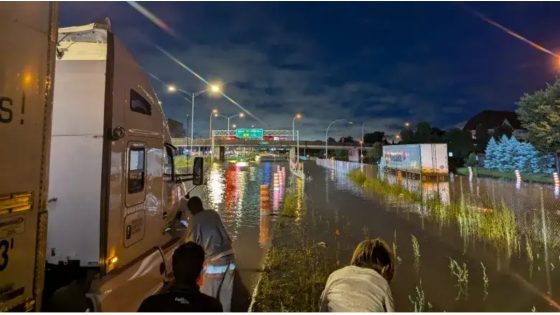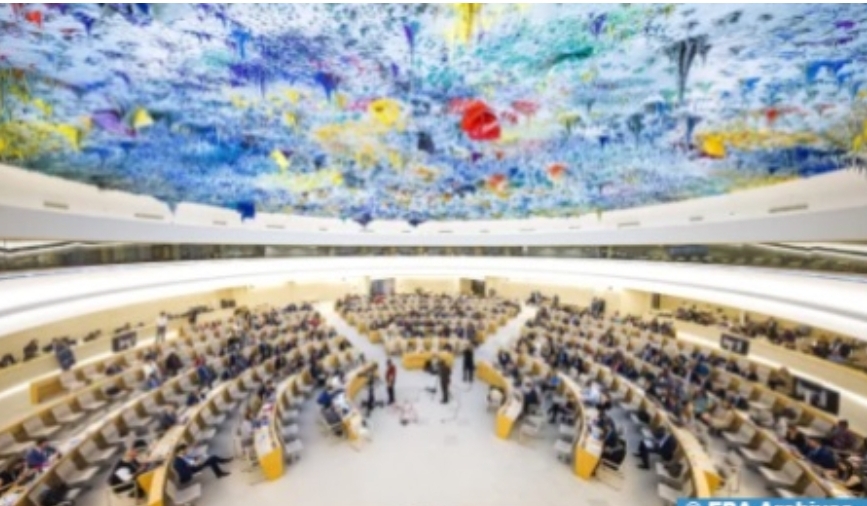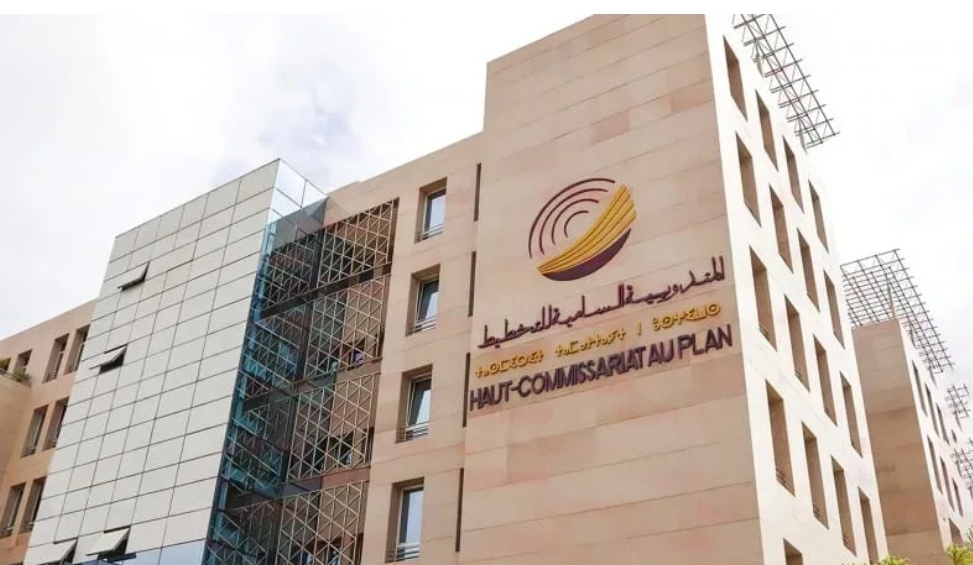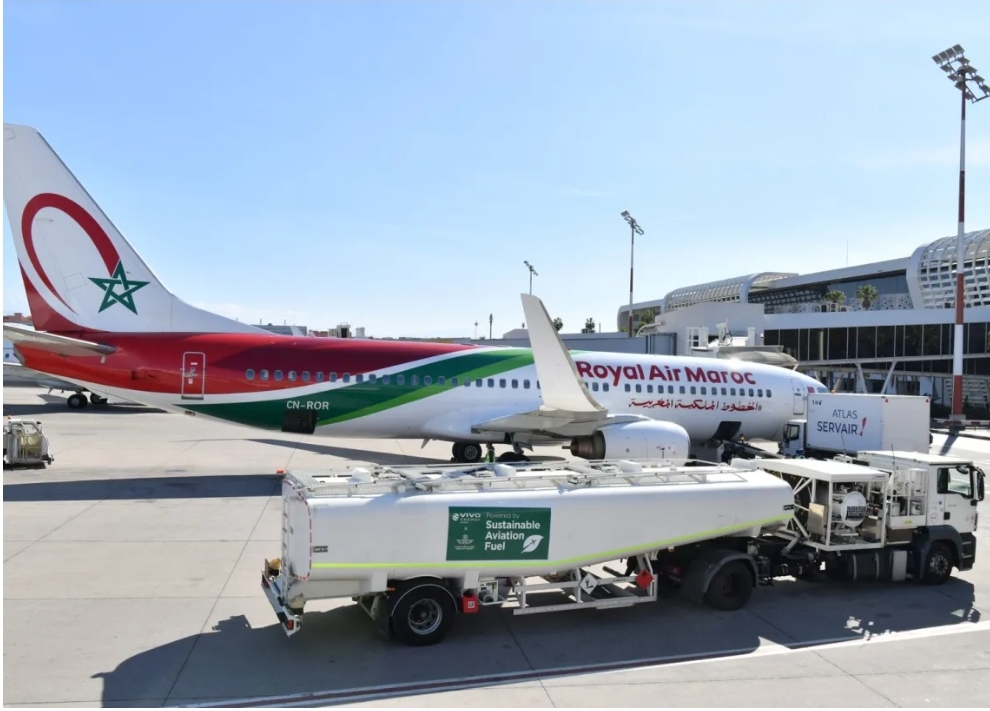Assahafa.com
James Murchison and his wife made their way into Montreal from Ottawa as non-stop rain poured over Southern Quebec on Aug. 9.
They’d given themselves four hours to do so, despite the trip normally taking two. Murchison had planned drinks with friends in the city around 8:30 p.m. The couple were staying at his in-laws to attend a wedding over the weekend.
When they hit Kirkland on the western edge of Montreal island, traffic suddenly slowed on Highway 40. Water began to rise around them until it blocked the road in front and behind. Some cars became submerged and before they knew it, Murchison and his wife, and about 150 other vehicles, were trapped.
“It happened really fast,” Murchison said. Minutes turned into hours. “We were just kind of stuck on, like, a little island for six hours.”
Murchison’s plight paled in comparison to the hundreds of Montrealers and Quebecers whose basements and — in some cases in the Laurentians and Mauricie regions — entire homes were damaged by the intense rain. In Montreal, up to 158 millimetres fell in 24 hours; in other parts of the province, that amount rose to 200 millimetres.
Buried rivers flow under Canadian cities, hidden in a labyrinth of tunnels and sewer pipes
Municipalities across Quebec have come under scrutiny by aggrieved residents, but mayors like Montreal’s Valérie Plante have defended their work, saying it’s impossible to keep pace with the rising frequency of heavier rains brought on by climate change.
“In some cities, it’s wildfires or tornadoes. For us, it’s water,” Plante said in a televised interview on Radio-Canada Tuesday. The mayor said the city has been replacing underground tunnels that were neglected for decades, since she came into office seven years ago. She listed initiatives to absorb rainwater, including sponge parks, creating more green spaces and planting trees. Ultimately, she said, “there will never be zero risk.”
But a discovery Murchison made while he was sitting in his car can offer clues about where the water in the city, and on the island as a whole, goes when there’s just too much of it.
Am I in a river?
On the patch of highway, people got out of their cars and started walking around. A group played a game of pickle ball. Some left, wading through the water and returning with pizza. Murchison wondered what about the geography around him could have caused the water to accumulate there. He looked on Google Maps and could see a thin blue line near his location, indicating some sort of stream.
“I’m just curious if I’m — if I’m in a river,” said Murchison, who’d heard cities were built over small rivers and stream networks that were restricted to underground tunnels, culverts and in some cases buried.
Searching on his phone, he found two maps of the island of Montreal, dated 1744 and 1892, showing an important river right where he and all those other cars were sitting.
Old maps reveal all kinds of secrets and, in recent years as heavy rainfalls multiply, scientists and urban planners have turned to centuries-old cartography to understand areas that could be vulnerable to flooding.
Because cities are mostly built of concrete, they can’t absorb water well and it ends up travelling until it accumulates in low or flat plains. It is in those places that rivers or streams may have once flowed.
All of Canada’s major cities were essentially built on top of waterway networks, diverting and confining tributaries to often overburdened sewer networks.
“Our topography recalls the presence of these waterways,” said Pascale Rouillé, an urban planner and the founder of Les Ateliers Ublo, a company that helps Quebec municipalities with green infrastructure projects.
“In places where waterways were buried, the ground is often already saturated, so it can’t absorb more water and the water can’t make its way to a stream,” Rouillé said. “It creates an issue.”
Montreal’s hidden rivers:
‘Constant flow of water’
It has created issues for Robert De Pellegrin and Michael Burstall, who own businesses near one of Montreal’s most famous lost rivers in Lachine: the St. Pierre River.
Friday, Burstall’s towing headquarters on Montréal-Toronto Boulevard next to Highway 20 began filling with water. By mid-week, he was still dealing with the aftermath.
“This time it was the worst it’s ever been. I got two feet of water all in our building here,” Burstall said.
While it may have been the worst instance of flooding since Burstall’s been in the area for 20 years, it wasn’t the first.
“Every spring when everything starts melting,” Burstall said, “it becomes like we’re in a lake.”
On the other side of the highway, on a property Burstall used to own, De Pellegrin has had similar issues.
“There’s always a constant flow of water flowing onto our land,” De Pellegrin said.
He and his wife Lucie Dumais run popular second-hand store Eco Depot. In 2021, they moved from a rented warehouse down the road to a blue industrial building on Richer Street, right below an escarpment in an area of Montreal known as Ville Saint-Pierre.
That winter, a thick sheet of ice covered the property. De Pellegrin said Burstall had warned him there would be water come spring. A couple months later, a small waterfall appeared on the escarpment.
“I actually thought about building a little hydroelectric dam,” De Pellegrin said. On his gravel driveway, De Pellerin “dug a hole the size of 10 bathtubs and it was filled up in two, three hours.”
After a few floods, De Pellegrin had a French drain system installed at a cost of $650,000. He estimates the business lost another $250,000 due to flooding damage and work interruptions.
So, Friday, when rain flooded the streets around Eco Depot, De Pellegrin was thankful the renovations prevented his property from sustaining more damage.
A video he took shows a gurgling manhole in the middle of the road covered in water. A Mercedes sedan and a pickup truck struggle to get through.
Earlier this year, CBC News published an interactive feature on hidden rivers in Canadian cities. It reported that the last 200 metres of the Saint-Pierre River was erased by the City of Montreal in 2022, after a court ordered it to in a legal battle with a golf course that sits above Eco Depot.
Did Montreal go ‘overboard’ with highways?
Back on Highway 40, James Murchison said firefighters eventually appeared, made sure everyone was OK and left. At around 1 a.m., the water abated and it was clear enough to get moving again.
Murchison never made it to drinks (even his buddies struggled to find a bar that had power) but he and his wife were able to attend the wedding.
City of Kirkland spokesperson Jerry Vu said in an email that the city’s “teams are still investigating what transpired last Friday on Highway 40, therefore it would be too soon for us to comment.”
Murchison remains unimpressed.
“I think you guys really went overboard with highway infrastructure in the 1960s,” he said.
Rouillé, the urban planner, said highways across the world are often at risk of flooding because they are in low, flat areas where it was easy to build. She and four colleagues from competing firms signed an open letter last week, saying it’s not too late to implement green infrastructures.
Quebec’s Transport Ministry said in an email it is working to update highway infrastructure to make it more resilient to climate change.
Ghost creeks: Winnipeg buried many waterways that could have changed city’s shape
Rouillé noted innovations such as porous asphalt could be a future solution, but such materials are often incompatible with heavy machinery like de-icing trucks, a Transport Ministry spokesperson noted over the phone.
As for the river that used to run through Highway 40 where Murchison was, it still exists. The eight-kilometre tributary called Rivière à l’Orme happens to be the last, mostly intact river on the island. Newspaper La Presse published a feature about it just last week.
Source: cbc














